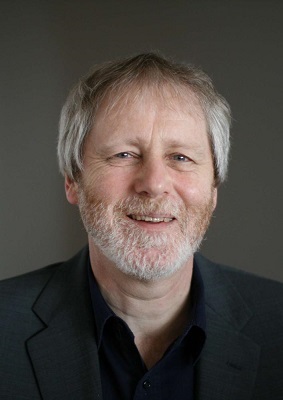Photonic Crystal Fibres: A Multifaceted Superhighway for Light
Hosted By: Fiber Modeling and Fabrication Technical Group
04 March 2021 8:00 - 9:00
Eastern Time (US & Canada) (UTC -05:00)Join the OSA Fiber Modeling and Fabrication Technical Group for a webinar featuring Philip Russell, Max-Planck-Institute for the Science of Light, discussing photonic crystal fibre and its large range of applications.
Photonic crystal fibres (PCFs) — thin strands of glass with an intricate array of hollow channels running along their length — offer an unprecedented degree of control over the guided light, making possible e.g. efficient generation of multi-octave-spanning supercontinuum light from infrared pump pulses. Chirally twisted PCF is circularly birefringent, supporting optical vortices and in some cases strong circular dichroism. Hollow-core PCFs can be designed to guide light over an extremely wide frequency range and its dispersion adjusted by varying the gas pressure in the core, providing a simple means of compressing pulses to single-cycle durations, as well as underpinning a range of unique sources of tunable deep and vacuum ultraviolet light. Particles can be trapped optically in hollow core PCFs and used to sense physical quantities with high spatial resolution. Strong optomechanical effects in solid-core PCFs have been used to robustly mode-lock fibre lasers at few-GHz frequencies.
Subject Matter Level:
- Intermediate - Assumes basic knowledge of the topic
What You Will Learn:
- About photonic crystal fibre and its many variants
- About the large range of applications, in both linear and nonlinear optics
Who Should Attend:
- Anyone interested in learning about PCF and its multi-various applications
- Suitable for graduate students working in the field or anyone who wants to learn about PCF
About the Presenter: Philip Russell, Max-Planck-Institute for the Science of Light
 Philip Russell is a Director at the Max Planck Institute for the Science of Light and Krupp Professor of Experimental Physics at the University of Erlangen-Nuremberg in Germany. He has worked on photonic crystal fibre (PCF) since inventing it in the early 1990s and has won a number of awards, including OSA's Fraunhofer Award and Burley Prize (2003), IoP's Thomas Young Medal and Prize (2004), the 2005 Körber Prize for European Science, the 2013 EPS Prize for Research into the Science of Light, the 2014 Berthold Leibinger Zukunftspreis, the 2015 IEEE Photonics Award and the 2018 Rank Prize for Optoelectronics. He is Fellow of the Royal Society and OSA and was OSA's President in 2015. He founded the companies BlazePhotonics Ltd (low-loss hollow core PCF for telecomms) and Ultralumina GmbH (pulse compression in gas-filled in hollow-core PCF).
Philip Russell is a Director at the Max Planck Institute for the Science of Light and Krupp Professor of Experimental Physics at the University of Erlangen-Nuremberg in Germany. He has worked on photonic crystal fibre (PCF) since inventing it in the early 1990s and has won a number of awards, including OSA's Fraunhofer Award and Burley Prize (2003), IoP's Thomas Young Medal and Prize (2004), the 2005 Körber Prize for European Science, the 2013 EPS Prize for Research into the Science of Light, the 2014 Berthold Leibinger Zukunftspreis, the 2015 IEEE Photonics Award and the 2018 Rank Prize for Optoelectronics. He is Fellow of the Royal Society and OSA and was OSA's President in 2015. He founded the companies BlazePhotonics Ltd (low-loss hollow core PCF for telecomms) and Ultralumina GmbH (pulse compression in gas-filled in hollow-core PCF).
